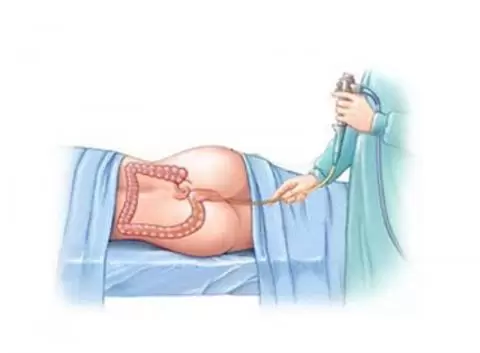बस्ति - Basti (Enema Therapy)

I. Introduction
In the holistic healing, Ayurveda stands out as a time-tested system that have a range of therapeutic procedures. One such profound Ayurvedic therapy is Basti, a practice that goes beyond conventional treatments. Basti is one of the Panchkarma therapy.
Basti comes in various forms, each catering to specific health needs. Anuvasana Basti focuses on lubrication, while Asthapana Basti emphasizes elimination. Combined Basti therapies offer a comprehensive approach to holistic healing. We will see in detail about this two Basti –
Anuvasana Basti
Anuvasana Basti is one of the traditional Ayurvedic therapies that involves the administration of medicated oils or ghee into the rectum. It is a form of enema therapy and is classified under the category of Sneha Basti (oleation enema). The therapy is aimed at nourishing and lubricating the body, promoting overall well-being and maintaining the balance of the doshas – Vata, Pitta, and Kapha.
Here are some key aspects of Anuvasana Basti in Ayurveda:
1. Purpose:
- Nourishment: Anuvasana Basti is primarily used for providing nourishment and oleation to the body tissues. The medicated oils or ghee used in this therapy are believed to penetrate deeply into the tissues, promoting strength and vitality.
- Balancing Doshas: It helps in balancing the Vata dosha, which is considered the primary dosha governing movement and functions in the body. Vata imbalance can lead to various health issues, and Anuvasana Basti helps in pacifying and balancing it.
- Preparation of body for Niruha Basti: Anuvasan Basti helps to lubricate our body, which loosens the accumulated toxins from body. Then, that toxins are easily removed by the next Niruha Basti.
2. Composition of Medicines:
- The medicated oils or ghee used in Anuvasana Basti are carefully prepared by combining various herbs, minerals, and other Ayurvedic ingredients. The selection of ingredients depends on the individual’s constitution, health condition, and the purpose of the therapy.
- Most commonly used oils are Dashamula oil, Sesame oil, Sahachara oil, Nirgundi oil etc
3. Administration:
- Anuvasana Basti is usually administered after the individual undergoes an initial cleansing procedure called Massage and Steam bath.
- The patient is positioned in a specific manner, and the medicated oil or ghee is introduced into the rectum using a specialized enema apparatus.
- After administration of oil, tapping on lower back, rubbing of soles and elevating legs for 3 times are generally done for better absorption of oil or ghee.
- The quantity and duration of the therapy may vary based on the individual’s constitution, the severity of the condition, and the practitioner’s recommendations. commonly 30 to 250 ml of Anuvasana Basti is administered in one session.
4. Indications:
- Anuvasana Basti is recommended for various health conditions, including joint disorders, neurological issues, infertility, and certain chronic diseases.
- It is particularly beneficial for individuals with Vata dosha dominance or those experiencing symptoms of Vata imbalance, such as dryness, stiffness, and pain.
5. Benefits:
- Joint Health: Anuvasana Basti is often used in the management of joint disorders like arthritis, promoting lubrication and reducing inflammation.
- Nervous System Support: It is beneficial for neurological conditions, improving nerve function and overall nervous system health.
- Rejuvenation: The therapy is considered rejuvenating, promoting longevity, and enhancing vitality.
Niruha Basti in Ayurveda:
Niruha Basti specifically refers to a type of medicated enema that involves the use of decoctions or herbal infusions. It is one of the Panchakarma therapies, a set of five cleansing and rejuvenating procedures in Ayurveda aimed at balancing the doshas (fundamental energies) and promoting overall health.
Components of Niruha Basti:
- Honey – According to need, amount of honey is decided.
- Salt – Specific salt named as Lavana, is used in Niruha basti.
- Medicated Oil or Ghee: Niruha Basti also include the medicated oils or ghee (clarified butter).
- Kalka – Herbal paste is also used in Niruha Basti.
- Decoction (Kashaya): The main component of Niruha Basti is a specially prepared herbal decoction. The selection of herbs in the decoction is based on the individual’s constitution (Prakriti) and the specific health condition being addressed.
Procedure of Niruha Basti:
- Preparation: The Ayurvedic practitioner prepares a decoction using a combination of herbs chosen for their therapeutic properties. The herbal mixture is boiled to extract the active constituents. This basti must be given immediately after preparation. Thus, preparation of this basti starts after proper counselling and pre-procedure therapies like Massage and steam
- Administration: Patient is asked to sleep on his / her left side with right knee folded and left leg straightened. The prepared decoction is then administered as an enema. The process involves introducing the herbal solution into the rectum through a specially designed enema apparatus. This basti is given in empty stomach or after 4 hours of meal
- Duration: The enema is retained in the colon for a specific duration, from 10 minutes to 45 minutes allowing the medicinal properties of the herbs and other substances to be absorbed. If basti is retained more than 45 minutes, then it must be removed via purgation or use of Phalavarti
- Post-Procedure Measures: After the enema is expelled, the individual is advised to rest and follow specific post-procedure measures, including dietary guidelines and lifestyle recommendations, to maximize the benefits of Niruha Basti.
Indications for Niruha Basti:
Niruha Basti is recommended for various health conditions, and its applications may include:
- Vata Imbalance: It is particularly beneficial for addressing disorders associated with Vata dosha imbalance, such as joint disorders, neurological conditions, and certain digestive issues.
- Detoxification: Niruha Basti is a powerful method for detoxifying the body by eliminating accumulated toxins and promoting the elimination of waste materials from the colon.
- Gastrointestinal Disorders: It may be used to address certain gastrointestinal disorders, promoting regular bowel movements and balancing digestive functions.
- Musculoskeletal Issues: Conditions like arthritis, rheumatism, and muscular pain may benefit from Niruha Basti due to its potential anti-inflammatory and pain-relieving effects.
Benefits of Niruha Basti:
- Detoxification: The enema helps eliminate accumulated toxins, Ama and waste materials from the colon, supporting overall detoxification.
- Balancing Doshas: Niruha Basti is believed to balance the doshas, particularly Vata dosha, helping restore harmony to the body. It also helps in maintaining Pitta and Kapha dosha.
- Improving Digestion: It may enhance digestive functions by promoting regular bowel movements and reducing digestive disturbances.
- Musculoskeletal Support: The therapy is often employed for its potential benefits in addressing musculoskeletal issues, especially those related to Vata disorders.
FAQs
Basti is generally safe but consulting with a qualified practitioner is recommended, especially for individuals with specific health conditions
The duration varies, but a typical session may last anywhere from 10 minutes to 45 minutes for Niruha Basti. And for Anuvasana Basti, duration may extend up to 12 hours.
It’s advisable to undergo Basti under the guidance of a trained Ayurvedic practitioner to ensure proper administration and safety.
A practitioner may recommend dietary adjustments before and after Basti, tailored to individual needs.
Uniqueness of our therapies
At Arogya Mandir – Shri Siddhanath Ayurvedic Hospital, Miraj, we delve deeply into the ayurvedic examination of each patient. Utilizing noninvasive Ayurvedic diagnostic tools such as Ashtavidha Parikshan and Nadi Parikshan, we precisely determine the pathogenesis of the disease and then prescribe therapies tailored to the specific condition. This approach leads to expedited results.
Our therapies boast the following distinctive features:
– Tranquil and hygienic therapy rooms staffed with trained therapists in a positive environment.
– Selection of appropriate massage oil based on the patient’s Prakruti and the condition of the disease.
– Complimentary Prakruti and Dhatu Sarata examinations before the commencement of therapies.
– Authenticated procedures for each therapy.
– Judicious use of herbal medicines and instruments during the therapy sessions.
– Specialized rooms equipped with all facilities for inpatient care.
Feel free to share this article at no cost.
Copyright message – Dr. Prashant Chivate has published this article on drchivateayurved.org for informational purposes about diseases. Any other use of this article is strictly prohibited. All rights reserved.
